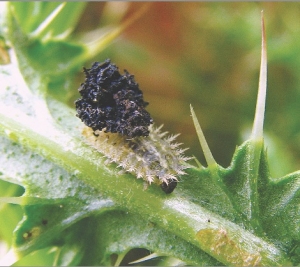Southland and Otago farmers in particular are facing an onslaught from Californian thistle and weed wiping or boom spraying now will give good control, says Ravensdown agrochemical technical manager Nick Roulston.
Meanwhile, Bay of Plenty Regional Council staff have released Green Thistle Beetles at two sites in the Western Bay area following releases elsewhere in the region.
The beetles are one of a number of biological agents being trialled.
This follows some successful bio controls established, such as Ragwort Flea Beetle (Longitarsus jacobaeae) which has been helping keep a lid on Ragwort (Jacobaea vulgaris) in the region for 20 years.
“Establishing biological control agents in areas where pest plants are rife can work well for both the landowner and the environment,” says the council’s western land management manager Robyn Skelton. “We are hoping these beetles will establish themselves and help us in our efforts to control these pest plants in the future.”
Skelton’s colleague Andrew Blayney says feedback from landowners on the biological control agents has been “really positive.”
“Some of the plants they tackle are aggressive and extensive and can significantly affect our environment, economy and our people. If these beetles establish themselves as we are hoping, then we will look at introducing them to other properties further down the track.”
Te Puke farmer Carol Burt’s property is one of the sites where the Green Thistle Beetles have been released.
“We’ve had releases of other types of agents on our property before and had good success with them. In particular… in slowing down the spread and reducing the density of… Nodding Thistle and Scotch Thistle.”
Roulston says Californian thistles cut pasture yield by competing for light, water and nutrients. They also reduce effective grazable area – because stock won’t graze close to the plants.
He adds that the best control from herbicides is achieved just after most plants finish flowering – as the flow of sugars from photosynthesis to root rhizomes helps pull the chemical down into these storage organs, limiting ability to re-grow from rhizomes next spring.
“Californian thistles spread underground at a rate of 1.5m/year, with a large amount of energy being stored in the root rhizomes,” he explains.
“Practically, this means no matter what control method is used, it must be done over multiple years to ensure effective control.”
He says clopyralid-based products provide excellent control and result in increases in grazing available – with fewer thistles far exceeding any costs.

















